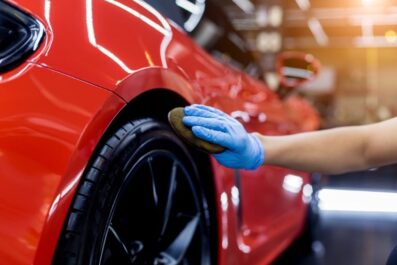The Importance of Fender Liner

When you think about essential automotive components, your mind likely jumps to the engine, brakes, or tires. Yet, tucked away beneath your vehicle’s fenders, there lies a deceptively simple part that plays a vital role in protecting your car: the fender liner, often referred to as wheel well liners. These plastic or rubberized shields are the unsung guardians against the relentless onslaught of road debris, and understanding their importance is key to maintaining your vehicle’s value and performance.
More Than Just a Plastic Shield: The Core Functions of Fender Liner and Wheel Well Liners
The fender liner is a semi-flexible barrier that attaches to the inside of your vehicle’s fender, completely enclosing the wheel well cavity. It serves multiple, critical purposes, all aimed at protecting the sensitive components hidden inside the wheel area.
1. The Primary Defense Against Debris and Corrosion
Every time your tires spin, they kick up a barrage of road hazards—rocks, dirt, mud, salt, water, and sand. Without a wheel well liner, this debris would be flung directly onto the internal parts of the fender and the vehicle’s undercarriage.
Impact Protection: The liner absorbs the impact of flying stones, preventing them from chipping the paint on the inside of the fender, which is a common starting point for rust. It also shields vulnerable components like electrical wiring, windshield washer fluid reservoirs, and cooling system overflow tanks that are often nestled just behind the fender.
Moisture and Salt Barrier: Crucially, the liner acts as a shield against moisture and road salt. Salt is highly corrosive, and preventing it from coating metal components and joints significantly slows down the formation of rust and degradation of critical systems.
2. A Hidden Role in Aerodynamics and Noise Reduction
While not their primary function, high-quality fender liner and wheel well liners contribute subtly to the overall driving experience.
Aerodynamics: By smoothing the airflow inside the wheel well cavity, the liner reduces turbulence and drag, contributing marginally to the vehicle’s overall efficiency.
Noise Dampening: The material of the liner absorbs road noise and tire splash, preventing it from reverberating up into the passenger cabin. A damaged or missing liner can often lead to a noticeable increase in road noise.
The Choice is Yours: OEM vs. Aftermarket Fender Liner
When a fender liner becomes damaged—a common occurrence due to accidents, off-roading, or simply wear and tear—you have a decision to make: replace it with an Original Equipment Manufacturer (OEM) part or opt for an aftermarket fender liner.
OEM liners are designed to the exact specifications of your vehicle, ensuring a perfect fit and material quality. However, the aftermarket offers a compelling alternative, particularly when considering specific needs or aesthetic upgrades.
Hooke Road is one popular provider of robust, high-quality solutions for off-road enthusiasts and everyday drivers seeking enhanced protection.
The rise of the aftermarket fender liner market has led to the development of specialized products, often made from more durable or flexible materials than the originals. Many off-road vehicles that install large tires or custom suspensions often require modified or heavy-duty aftermarket options to accommodate the increased wheel travel and clearance.
Elevating Protection with Fender Flares
While the fender liner sits inside the wheel well, fender flares are components that attach to the exterior edge of the fender. These are particularly important for vehicles with wider tires, as they are mandated in many regions to ensure the tire tread is fully covered.
Fender flares work in tandem with the wheel well liners to provide comprehensive protection:
The fender flare catches the large, high-velocity debris and spray that extends beyond the vehicle’s body line.
The wheel well liner protects the internal engine, wiring, and body structure from the smaller debris that makes it past the tire and flare, and provides the critical corrosion barrier.
HR aftermarket liners and flares are often designed for improved durability and aesthetic appeal, making them a popular upgrade for trucks and SUVs. This synergistic relationship is why many off-road packages bundle heavy-duty liners and matching flares. A high-quality aftermarket setup ensures that whether you’re driving on a salty winter road or tackling a rugged trail, your vehicle’s internals remain shielded.
Recognizing and Replacing a Damaged Liner
A damaged or missing fender liner should not be ignored. Common signs of damage include:
Audible Rattling: Loose plastic hitting the tire or suspension.
Increased Road Noise: Hearing the roar of the tires or the splashing of puddles more clearly.
Visible Gaps: Seeing exposed wiring, hoses, or painted metal inside the wheel well.
Replacing a damaged liner is a straightforward, necessary repair. Ignoring the damage means exposing your vehicle to accelerated rust, costly electrical or cooling system damage, and even potential suspension issues if debris jams moving parts.
In conclusion, the humble fender liner or wheel well liner is far more than just a piece of plastic. It is a fundamental component of your vehicle’s passive protection system, preserving its structural integrity, reducing noise, and guarding against the long-term, corrosive effects of the road. Maintaining these liners is a small investment that yields significant dividends in vehicle longevity and reliability.




